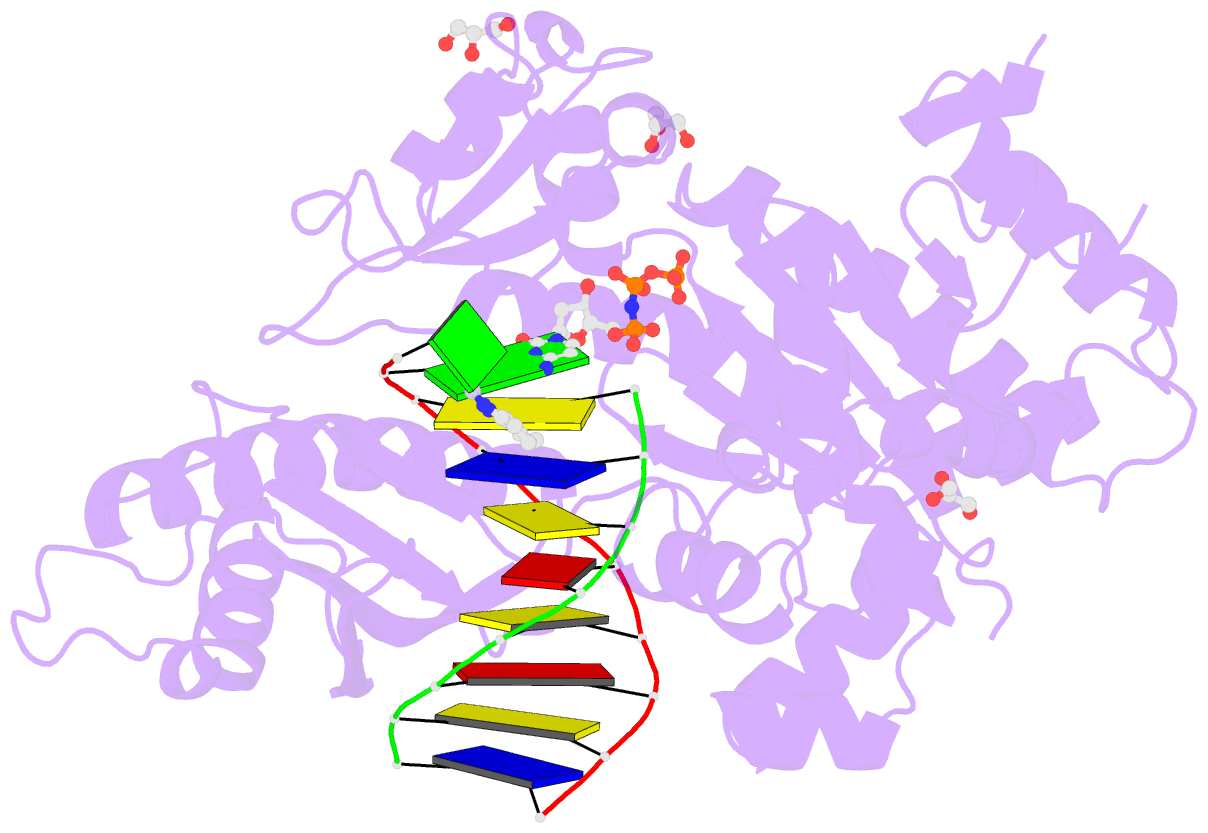Summary information and primary citation
- PDB-id
- 6mxo; SNAP-derived features in text and JSON formats;
DNAproDB
- Class
- nuclear protein-DNA
- Method
- X-ray (2.04 Å)
- Summary
- Structure of hpoleta incorporating dctp opposite the 3-prime pt(dach)-gg
- Reference
- Ouzon-Shubeita H, Baker M, Koag MC, Lee S (2019): "Structural basis for the bypass of the major oxaliplatin-DNA adducts by human DNA polymerase eta." Biochem. J., 476, 747-758. doi: 10.1042/BCJ20180848.
- Abstract
- Oxaliplatin, together with cisplatin, is among the most important drugs used in cancer chemotherapy. Oxaliplatin, which contains a bulky diaminocyclohexane (DACH) moiety, kills cancer cells mainly by producing (DACH)Pt-GpG intrastrand cross-links that impede transcription. The Pt-GpG tolerance by translesion DNA synthesis (TLS) polymerases contributes to the resistance of tumors to platinum-based chemotherapy. In particular, human DNA polymerase η (Polη) readily bypasses Pt-GpG adducts. While many structural studies have addressed how TLS polymerases interact with cisplatin-DNA adducts, a structure of DNA polymerase in complex with oxaliplatin-DNA adducts has not been reported, limiting our understanding of bypass of the bulky (DACH)Pt-GpG lesion by TLS polymerases. Herein, we report the first structure of DNA polymerase bound to oxaliplatinated DNA. We determined a crystal structure of Polη incorporating dCTP opposite the 3'G of the (DACH)Pt-GpG, which provides insights into accurate, efficient bypass of the oxaliplatin-GpG adducts by TLS polymerases. In the catalytic site of Polη, the 3'G of the (DACH)Pt-GpG formed three Watson-Crick hydrogen bonds with incoming dCTP and the primer terminus 3'-OH was optimally positioned for nucleotidyl transfer. To accommodate the bulky (DACH)Pt-GpG lesion, the Val59-Trp64 loop in the finger domain of Polη shifted from the positions observed in the corresponding Polη-cisplatin-GpG and undamaged structures, suggesting that the flexibility of the Val59-Trp64 loop allows the enzyme's bypass of the (DACH)Pt-GpG adducts. Overall, the Polη-oxaliplatin-GpG structure provides a structural basis for TLS-mediated bypass of the major oxaliplatin-DNA adducts and insights into resistance to platinum-based chemotherapy in humans.





